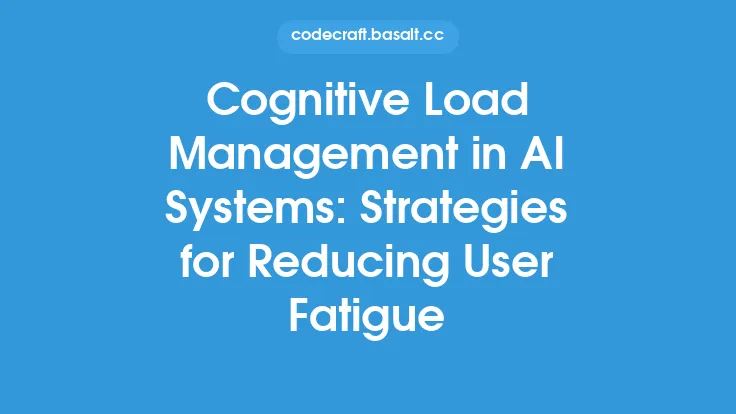When designing and implementing integrated systems, testing is a crucial aspect that ensures the overall quality and reliability of the system. Integrated systems comprise multiple components, interfaces, and data flows, making testing a complex and challenging task. In this article, we will delve into the testing strategies for integrated systems, exploring the various approaches, techniques, and best practices that can be employed to guarantee the seamless functioning of these systems.
Introduction to Testing Strategies
Testing strategies for integrated systems involve a combination of planning, execution, and evaluation of tests to verify that the system meets the required specifications and functions as expected. The primary goal of testing is to identify defects, errors, and inconsistencies in the system, and to ensure that the system is stable, scalable, and maintainable. A well-planned testing strategy helps to reduce the risk of system failures, improves the overall quality of the system, and enhances the user experience.
Types of Testing for Integrated Systems
There are several types of testing that can be applied to integrated systems, including:
- Unit testing: This involves testing individual components or modules of the system to ensure that they function correctly.
- Integration testing: This type of testing focuses on verifying that the interactions between components or modules are correct and that the data flows between them are accurate.
- System testing: This involves testing the entire system, including all its components, interfaces, and data flows, to ensure that it meets the required specifications and functions as expected.
- Acceptance testing: This type of testing is performed to verify that the system meets the acceptance criteria and requirements specified by the stakeholders.
- Regression testing: This involves re-testing the system after changes or updates have been made to ensure that the changes have not introduced new defects or affected the existing functionality.
Testing Techniques for Integrated Systems
Several testing techniques can be employed to test integrated systems, including:
- Black box testing: This technique involves testing the system without knowing the internal workings or implementation details of the system.
- White box testing: This technique involves testing the system with knowledge of the internal workings or implementation details of the system.
- Gray box testing: This technique involves testing the system with some knowledge of the internal workings or implementation details of the system.
- Equivalence partitioning: This technique involves dividing the input data into partitions and testing each partition to ensure that the system behaves correctly.
- Boundary value analysis: This technique involves testing the system at the boundaries of the input data to ensure that the system behaves correctly.
Test Environment and Tools
A test environment is a critical component of testing integrated systems. The test environment should mimic the production environment as closely as possible, including the hardware, software, and network configurations. Various tools can be used to support testing, including:
- Test automation frameworks: These frameworks provide a structured approach to automating tests, including tools such as Selenium, Appium, and TestComplete.
- Test management tools: These tools provide a centralized platform for managing tests, including tools such as TestRail, TestLink, and PractiTest.
- Defect tracking tools: These tools provide a platform for tracking and managing defects, including tools such as JIRA, Bugzilla, and Trello.
Best Practices for Testing Integrated Systems
Several best practices can be employed to ensure effective testing of integrated systems, including:
- Develop a comprehensive testing strategy: This involves defining the testing approach, identifying the testing scope, and determining the testing schedule and resources.
- Use a risk-based testing approach: This involves identifying the high-risk areas of the system and prioritizing testing efforts accordingly.
- Use automated testing: This involves using automated testing tools to reduce the testing effort and improve testing efficiency.
- Use continuous testing: This involves integrating testing into the continuous integration and continuous deployment (CI/CD) pipeline to ensure that testing is performed continuously throughout the development lifecycle.
- Use testing metrics and analytics: This involves using metrics and analytics to measure testing effectiveness and identify areas for improvement.
Challenges and Limitations of Testing Integrated Systems
Testing integrated systems can be challenging due to several factors, including:
- Complexity: Integrated systems comprise multiple components, interfaces, and data flows, making testing a complex and challenging task.
- Interdependencies: The components and interfaces of integrated systems are often interdependent, making it difficult to test individual components in isolation.
- Data consistency: Ensuring data consistency across the system can be challenging, particularly when dealing with large volumes of data.
- Scalability: Integrated systems can be scaled up or down, making it challenging to test the system under different scalability scenarios.
- Security: Integrated systems often involve sensitive data and security vulnerabilities, making it essential to ensure that testing is performed in a secure environment.
Conclusion
Testing integrated systems is a critical aspect of ensuring the quality and reliability of these systems. By employing a combination of testing strategies, techniques, and best practices, organizations can ensure that their integrated systems function seamlessly and meet the required specifications. While testing integrated systems can be challenging, the use of automated testing, continuous testing, and testing metrics and analytics can help to reduce the testing effort and improve testing efficiency. By prioritizing testing and investing in the right tools and techniques, organizations can ensure that their integrated systems are stable, scalable, and maintainable, and provide a high-quality user experience.





